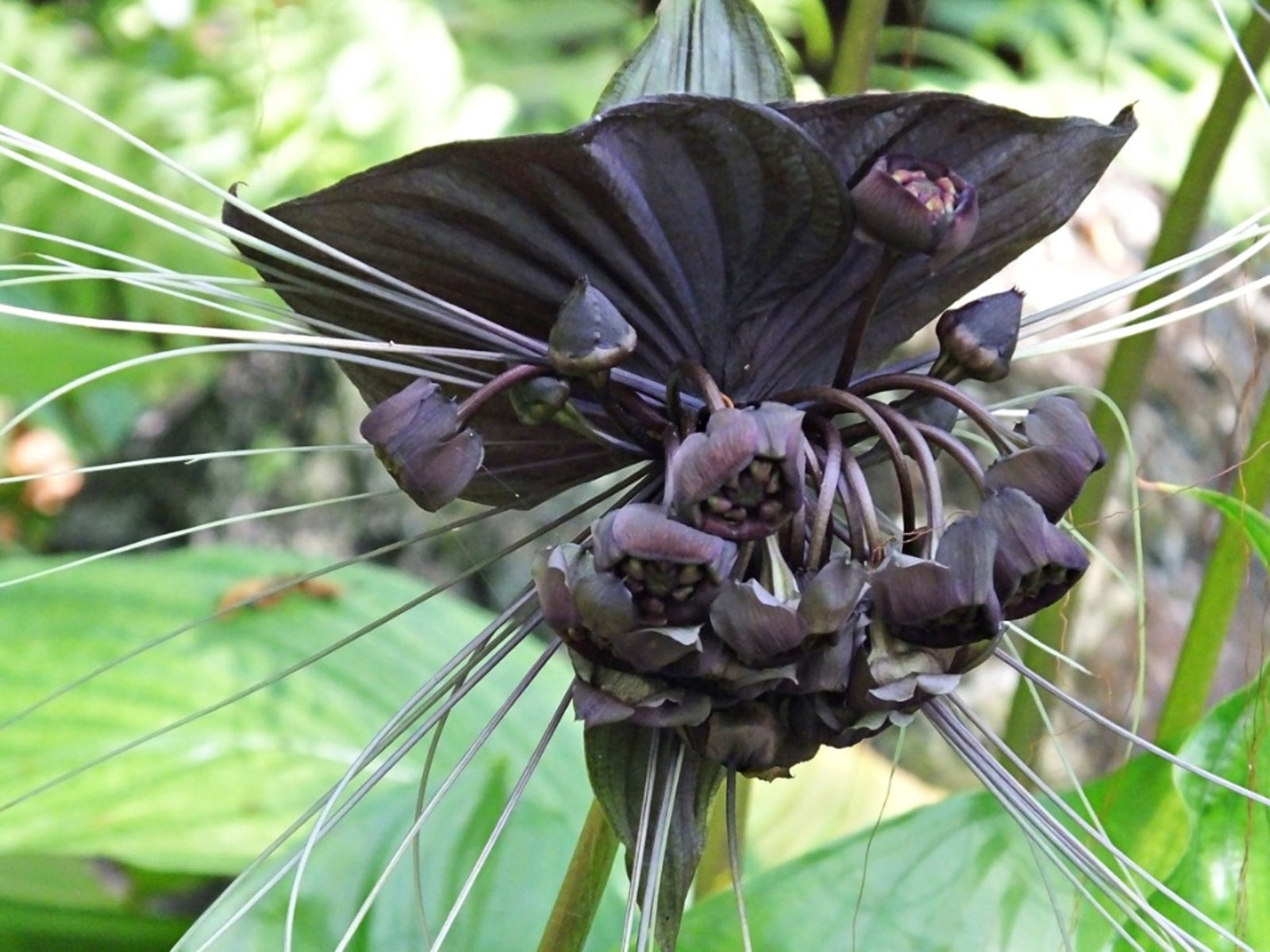Bat Flower Propagation: How To Grow Bat Flower From Seed


If you are looking for a truly astounding flowering plant, you have to try bat flower. These natives of southern Asia have dusky, purplish black blooms with unique, whisker like bracteoles bristling around the flower. All in all, the effect is quite unworldly and worthy of a true collector of unusual plants. You can order bat flower seed online, but the trick is in knowing how to grow bat flower from seed. These special plants have very specific growing conditions and bat flower seed germination can be a challenge unless you are armed with a list of the plant’s likes and dislikes.
Bat Flower Propagation
Bat flower, or Tacca, is a plant that is native to warm, humid regions of Asia. It can grow to 36 inches (91 cm.) in height and bear huge 12 inch (31 cm.) flowers. The bizarre flowers are the real conversation starter and ender. The slightly creepy flowers boast two large, leathery flanking bracts which inform the notion that the bloom is bat-like.
Bat flower propagation is generally from rhizomes or occasionally cuttings. Perfect conditions need to be met for growing bat flowers from seed, but it isn’t impossible. Many expert growers claim they get excellent germination from seed and have no problems, but other collectors express frustration with their green thumbs when trying to propagate from seed. Fortunately, the pods contain dozens of seeds, so if you get your hands on one, it never hurts to try.
How to Grow Bat Flower from Seed
The first step in growing bat flowers from seed is to acquire a mature seed pod. Pods should be allowed to mature and dry right on the plant for the best chance of germination.
Use a good potting soil that has been pre-moistened and plant seeds in a 2 inch (5 cm.) pot so they don’t need to be moved right away. Tacca plants do not seem to like to be transplanted and will take a while to recover. You may also choose to make your own mixture. A good planting medium is 10% sand, 40% peat moss, and 50% fine bark.
Seeds don’t need any stratification or scarification to germinate, though soaking the seed in water overnight may help enhance germination. What they do need is time. Germination times run the gamut from a couple of weeks to several months.
They also need evenly moist soil but not soggy media. Use a clear cover over the pot to conserve moisture but remove it daily to release excess that will build up and can cause damping off.
Gardening tips, videos, info and more delivered right to your inbox!
Sign up for the Gardening Know How newsletter today and receive a free copy of our e-book "How to Grow Delicious Tomatoes".
The last important ingredient to successful bat flower seed germination is heat. A heated soil mat to keep the bottom of the medium warm will greatly improve your chances of seeing a little sprout.
Caring for Bat Flower Seedlings
Remember where these amazing plants hail from and consider the wild seeds' needs as you set up your nursery. Plants live in tropical rainforests and need plenty of warmth with a partially shaded location that mimics the dappled light of a treed area.
Once you can safely handle the delicate seedlings, move them to larger pots. In summer, keep the little plants evenly moist, but in winter, diminish watering by half, while never allowing the plant to dry out completely. That would be a death knell for these humidity loving plants.
If your heating system tends to dry out the air, mist the plants once per week or set the container in a saucer with some small pebbles and fill with water. This increases humidity without soaking the roots.
An amazing tip from an expert grower is regarding water. He recommends using 1 cup (240 ml.) of hydrogen peroxide per gallon (4 L.) of water to help prevent fungal issues. Bat flowers in home cultivation are prone to these problems due to high humidity, low circulation, and often excess moisture.
Fertilize in spring and increase circulation as you keep the plant moist. In several years, you may be rewarded with a display of the odd, yet beautifully eerie flowers and their subsequent pods.
Want to Step Up Your Houseplant Game Even More?
We've put together a complete guide to houseplants here. You'll find not only the tips to growing jaw-dropping houseplants that'll impress your friends, but also details on just about every step in growing houseplants.
Happy Gardening!

Bonnie Grant is a professional landscaper with a Certification in Urban Gardening. She has been gardening and writing for 15 years. A former professional chef, she has a passion for edible landscaping.
-
 Looking For Plants To Give You The Soft And Fuzzies? Try These 5 Fuzzy Leaf Plant Options
Looking For Plants To Give You The Soft And Fuzzies? Try These 5 Fuzzy Leaf Plant OptionsLovers of texture, drama, silver foliage and tactile plants will adore these special sensory garden additions. These fuzzy leaf plant options will leave you all aglow
By Susan Albert
-
 Get Ready For A Summer Of Hummers! Grow These Full Sun Hummingbird Plants and Flowers
Get Ready For A Summer Of Hummers! Grow These Full Sun Hummingbird Plants and FlowersIf you’re lucky enough to enjoy a sunny backyard, make sure you are maxing out on your pollinator opportunities and grow these full sun hummingbird plants and flowers
By Tonya Barnett
